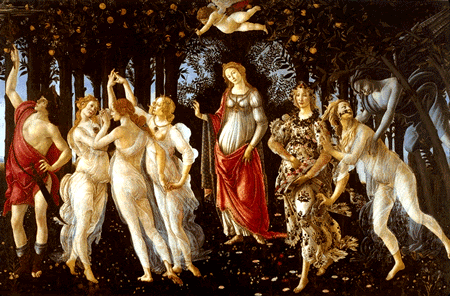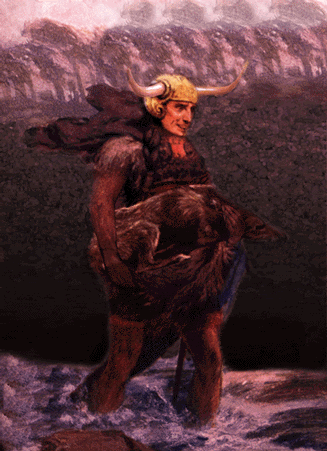original post May 26 2010 (http://truemaskedwabbit.multiply.com/journal/item/54)
The sun is finally warming up this northern part of North America decimating the winter’s chilly days, lost flowers planted too early in eagerness and early darkened night times. I’ve always loved the sun since childhood. I’d settle all my dolls into their designated nap time places, although some of the dolls had fur and four legs, nevertheless it was high noon and their nap time and as for me, the time to lie down in the tall grass of my father’s land and once more wonder about the mysteries of the sun. No sooner would I have settled down I could feel the warmth of the sun caress my face in a gentle greeting and kisses kissed by angels, I knew very well those were the kisses of angels indeed because my freckles would turn a shade darker across my nose, and this of course was good enough proof for me.
I would hold up my hand against the sun squeezing my fingers tightly together and see the outlines of their bones, nature’s X-Ray machine. But the sun could do so much more. It could sprinkle sparkles across the lake, dancing on the waves like fairy elves beckoning to join them in a cooling splash or even send many different coloured rays on the edges of my mother’s large hallway mirror. I’d check and count the different colours of light with my right eye and then recheck with my left and count again the lights splitting into rainbow colours. My grandfather would at times worry then warn me, to stand in front of a mirror is vain, but I did not notice my own reflection, I saw the wonders of the sun.
Sunny Sunday mornings after church, my parents would take us kids for a bike ride on the country roads. While my mother would be on the lookout for pine cones along the forest floor, I’d watch the sun follow us through the trees and climb hills with us. Occasionally I’d get so absorbed by the sun’s light bouncing off and scattering in many directions of a granite rock along the way that I’d run my bike’s front wheel into my father’s rear wheel and send us both tumbling. He’d collect himself and sternly remind me to stay focused to which I’d reply; “I was. Just not in your direction.” He’d only nod and then smile to himself and I was sure the sun was smiling too.
Today, much older now, I see the sun with different eyes, the understanding of its physics, the workings of its beginning either to go out in a glory or fizzle quietly into an afterglow when its journey has reached its end. Just the same it captures all my senses even still to this day.
A neutron star, once a star eight times more massive than ours, collapses under its own gravity blasting out its outer skins in a super nova and now has become a compact spinning star in the night skies. Any planet with even the simplest single celled life form nearby would experience the energies of highs and lows by this spinning disco ball.
Or a star ten times or more massive than our sun blasts its final life outward into a super nova, then collapses in on itself but the neutron star continues to collapse where its massive weight creates a hole in space and time, known as a black hole and the mystery begins all over again. But super novas also leave a legacy behind when massive stars die. They create a stellar nursery, another solar system, another sun.
We love to observe the sun, whether we have very expensive telescopes or just a simple mirror to reflect the sun onto a sheet of paper and watch the sunspots, sunflares,solar eclipses and if you’re lucky that day even a coronal mass ejection. Since the beginning of pre-historic man and his awareness of this life giving globe in our skies, man always marvelled at this wonder that gives us warmth, makes trees, shrubberies and flowers come to life and from those very early observations many stories evolved, known today as myths.
Just for a change of pace here are some known myths among many.
Egyptian:
Ra (or Re) was known as the sun-god and the creator in ancient Egypt. He took on many forms, each depending on where he was. Usually Ra was portrayed with a hawk head, wearing a fiery disk like the Sun on his head. In the Underworld, the god took the form of a ram-head.
Ra was the creator of our world. In the beginning of time, an egg rose from the water. Once out of his shell, Ra had two children who became the atmosphere and clouds. They in turn had more children, Geb and Nut, who became the Earth and the stars. They in turn had two sons, Seth and Osiris, the father of Horus.
Picture: "Parnasus Apollo" by Raphael
In Greek mythology, Apollo was the son of Zeus (Jupiter) and Leto (Letona). He was the twin brother of the goddess Artemis. He was the god of the Sun, logic, and reason, and was also a fine musician and healer.
Leto travelled all over Greece to find a place to give birth to Apollo. She finally came upon an island named Delos. The island agreed to allow the birth of Apollo if he in turn founded a temple on the island. Leto agreed, and when Apollo grew up, he changed Delos into a beautiful island.
Sandro Botticelli: "Primavera" (1478). "Primavera" in Italian means "Spring." In this wonderfull painting by Botticelli, Mercury is depicted at far left. At the center is Venus, on Venus'left the three Graces, and on her right the goddess Flora. At the far right of the painting is the wind god Zephir pursuing the nymph Chloris. Zephir's breath cause the nymph to sprout flowers from her mouth.
Image courtesy of Planet Art.Artist's image of Lugh, the Sun god.
For the Celts, who lived in central Europe, Lugh was a Sun god. The underworld god Balor was his grandfather. Balor was the leader of the Fomorii. The Fomorii were evil people that lived in the underworld.
According to a prophecy, Balor was to be killed by a grandson. To prevent the happening of the prophecy, Balor tried to kill his grandson, but Lugh miraculously survived. Lugh was secretly raised by the god of the sea ,Manannan, and became an expert warrior.
When he reached manhood, he joined the peoples of the goddess Dana, named the Tuatha De Danaan, to help them in their struggle against the Fomorii and Balor. Balor had an evil eye capable of killing whomever looked at it. Lugh threw a magic stone ball into Balor's eye, and killed Balor.
Door to enclosure of Sun temple at Machu Picchu, Peru.
Inti was considered the Sun god and the ancestor of the Incas. Inca people were living in South America in the ancient Peru. In the remains of the city of Machu Picchu, it is possible to see a shadow clock which describes the course of the Sun personified by Inti.
Inti and his wife Pachamama, the Earth goddess, were regarded as benevolent deities. According to an ancient Inca myth, Inti taught his son Manco Capac and his daughter Mama Ocollo the arts of civilization and sent them to the Earth to instruct mankind about what they had learned.
Inti ordered his children to build the Inca capital where a divine golden wedge, they carried with them, would fall to the ground. Incas believed this happened in the city of Cuzco, which has been founded by the Ayar.
Surya Temple at Ranakpur, India.
Hinduism is the oldest Indian religion. Hinduism is based on some antique sacred writings and the assimilation of many different cultures and religious beliefs from other peoples. The oldest Hindu writing is the Rig Veda which is a collection of songs and hymns composed over 3,000 years ago. Many are the gods and goddesses described in the sacred Hindu writings.
In Hindu mythology, Surya represents the Sun god. Surya is depicted as a red man with three eyes and four arms, riding in a chariot drawn by seven mares. Surya holds water lilies with two of his hands. With his third hand he encourages his worshipers whom he blesses with his fourth hand. In India, Surya is believed to be a benevolent deity capable of healing sick people. Even today, people place the symbol of the Sun over shops because they think it would bring good fortune.
However, the heat and the light of Surya were so intolerable that Sanjna was always exhausted doing her domestic duties. Finally, Sanjna's father decided to help her and trimmed Surya's body reducing his brightness by an eighth. Thus, Sanjna could more easily live close to her husband.
The two STEREO observatories launched October 2006 are nearly identical with selective redundancy. The building of the spacecraft bus and the integration of the instruments were done by the Johns Hopkins University Applied Physics Laboratory (APL)
The two solar-powered observatories with 3-axis-stabilization, each had a mass at launch of approximately 1,364 pounds (620 kilograms, including propellant). The spacecraft communicate with the APL-based Mission Operations Center via NASA’s Deep Space Network.
SOHO, the Solar & Heliospheric Observatory, is a project of international collaboration between ESA and NASA to study the Sun from its deep core to the outer corona and the solar wind.
SOHO was launched on December 2, 1995. The SOHO spacecraft was built in Europe by an industry team led by prime contractor Matra Marconi Space (now EADS Astrium) under overall management by ESA. The twelve instruments on board SOHO were provided by European and American scientists. Nine of the international instrument consortia are led by European Principal Investigators (PI's), three by PI's from the US. Large engineering teams and more than 200 co-investigators from many institutions supported the PI's in the development of the instruments and in the preparation of their operations and data analysis. NASA was responsible for the launch and is now responsible for mission operations. Large radio dishes around the world which form NASA's Deep Space Network are used for data downlink and commanding. Mission control is based at Goddard Space Flight Center in Maryland.
TRACE, wass launched 02-Apr-1998- a three-axis stabilized spacecraft, uses an instrument provided guide telescope as the fine Sun sensor. The spacecraft must null the peak error to the guide telescope to within 20 arcseconds. The TRACE telescope has an image motion compensation mechanism which can attenuate jitter to about 0.1 arcseconds resolution. The Attitude Control System (ACS) uses three magnetic-torquer coils, one digital Sun sensor, six coarse Sun sensors, four reaction wheels, one three-axis magnetometer, and three two-axis inertial gyros. The ACS uses the spacecraft computer to perform closed loop attitude determination and control. (ESA/NASA)
Wish you all a very good week
Trudi/Wabbit






No comments:
Post a Comment